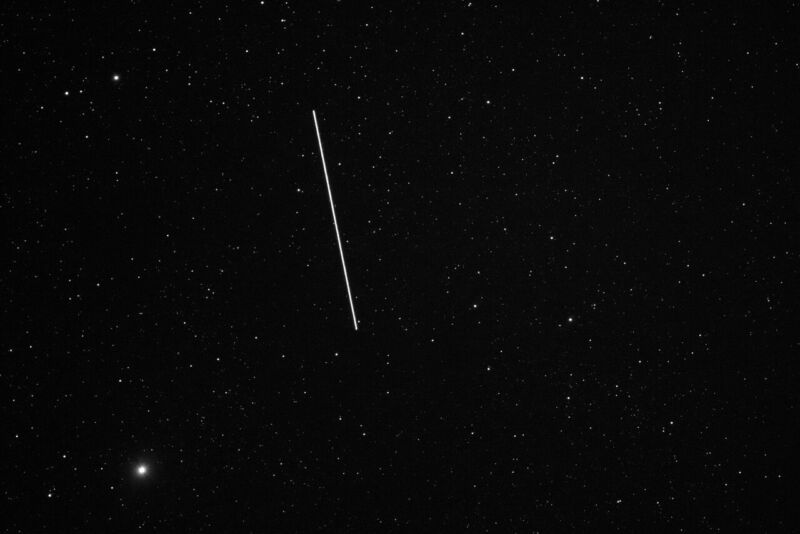
Last month, a Texas-based company announced that it had successfully deployed the largest-ever commercial communications satellite in low-Earth orbit.
This BlueWalker 3 demonstration satellite measures nearly 65 square meters, or about one-third the size of a tennis court. Designed and developed by AST SpaceMobile, the expansive BlueWalker 3 satellite is intended to demonstrate the ability of standard mobile phones to directly connect to the Internet via satellite. Large satellites are necessary to connect to mobile devices without a ground-based antenna.
In this emerging field of direct-to-mobile connectivity, which seeks to provide Internet service beyond the reach of terrestrial cellular towers, AST is competing with Lync, another company that also has launched demonstration satellites. In addition, larger players such as Apple and a team at SpaceX and T-Mobile have announced their intent to provide direct connectivity services.
So while there are many more such satellites coming, AST stands out at this time because it's the first to launch an exceptionally large satellite, and it plans to start launching operational "BlueBird" satellites in late 2023.
IAU concerns
Since BlueWalker3's launch in September, astronomers have been tracking the satellite, and their alarm was heightened following its antenna deployment last month. According to the International Astronomical Union, post-deployment measurements showed that BlueWalker 3 had an apparent visual magnitude of around 1 at its brightest, which is nearly as bright as Antares and Spica, the 15th and 16th brightest stars in the night sky.
For a few years, astronomers have been expressing concerns about megaconstellations, such as SpaceX's Starlink satellites. While these are more numerous—there are more than 3,000 Starlink satellites in orbit—they are much smaller and far less bright than the kinds of satellites AST plans to launch. Eventually, AST plans to launch a constellation of 168 large satellites to provide "substantial" global coverage, a company spokesperson said.
Even one is enough for astronomers, however. “BlueWalker 3 is a big shift in the constellation satellite issue and should give us all reason to pause,” said Piero Benvenuti, a director at the International Astronomical Union.
The organization of astronomers is also concerned about the potential for radio interference from these "cell phone towers in space." They will transmit strong radio waves at frequencies currently reserved for terrestrial cell phone communications but are not subject to the same radio quiet zone restrictions that ground-based cellular networks are. This could severely impact radio astronomy research—which was used to discover cosmic microwave background radiation, for example—as well as work in related fields.
Astronomers currently build their radio astronomy observatories in remote areas, far from cell tower interference. They are worried that these large, radio-wave transmitting satellites will interfere in unpopulated areas.
AST responds
An AST spokesperson provided a statement to Ars that implied the impact of its satellites must be weighed against the "universal good" of cellular broadband for people on Earth. However, the company also said it is willing to work with astronomers to address their concerns.
"We are eager to use the newest technologies and strategies to mitigate possible impacts to astronomy," the AST statement said. "We are actively working with industry experts on the latest innovations, including next-generation anti-reflective materials. We are also engaged with NASA and certain working groups within the astronomy community to participate in advanced industry solutions, including potential operational interventions."
To that end, AST said it is committed to avoiding broadcasts inside or adjacent to the National Radio Quiet Zone in the United States, which is a large area of land that includes portions of West Virginia and Virginia, as well as additional radioastronomy locations.
A US-based astronomer who focuses on light pollution, John Barentine, told Ars he welcomed the company's efforts to address radio interference. He also appreciates any efforts to mitigate effects on optical astronomy. However, Barentine warned, there is no recourse for astronomers but to take AST and other companies at face value due to a lack of regulatory oversight.
"Overtures by commercial space operators who commit that their activities in space will not adversely affect astronomy are made in the absence of any meaningful regulatory oversight that mandates mitigations," he said. "AST SpaceMobile’s stated intentions are laudable, but for now, they’re just words. So I reserve judgment pending whatever actions the company takes."



3175x175(CURRENT).thumb.jpg.b05acc060982b36f5891ba728e6d953c.jpg)

Recommended Comments
There are no comments to display.
Join the conversation
You can post now and register later. If you have an account, sign in now to post with your account.
Note: Your post will require moderator approval before it will be visible.